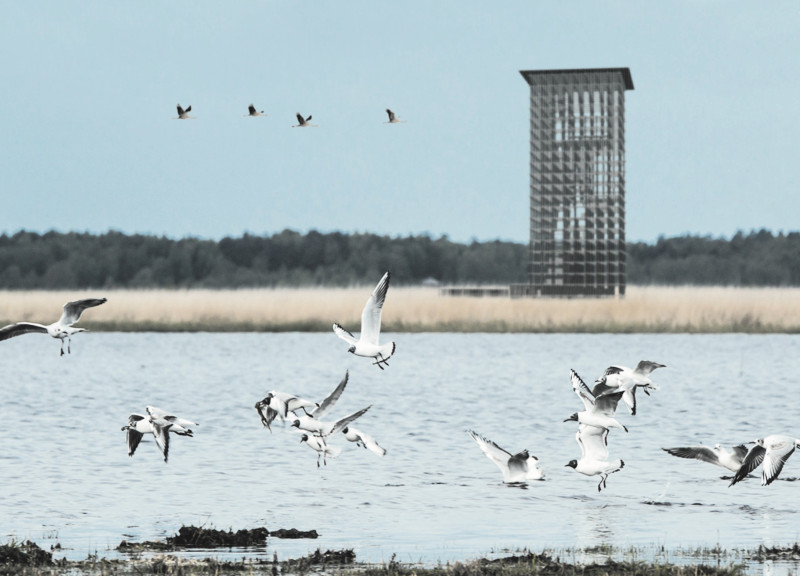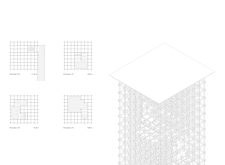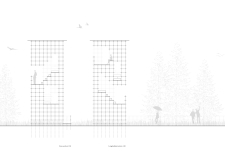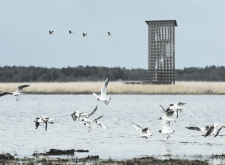5 key facts about this project
The design of the Pape Bird Observation Tower is characterized by its modular, wooden structure, crafted from local timber. This choice not only aligns with sustainable building practices but also ensures that the architecture harmoniously integrates with the surrounding landscape. By utilizing materials sourced from the regional forest, the project minimizes its carbon footprint while reinforcing the bond between the structure and its natural context. The use of charred wood in some sections adds durability, offering a visual and tactile contrast to the smooth surfaces of other wooden elements, which highlights thoughtful material choices.
As visitors approach the tower, they will find a connecting footbridge that seamlessly links the observation facilities to their natural surroundings. This bridging element not only serves a functional purpose but also invites exploration, encouraging users to engage with various habitats along the way. The footbridge, constructed from the same local timber as the tower, emphasizes a cohesive design language throughout the project.
A distinctive feature of the tower is its three-dimensional grid structure, which provides strength while maintaining a sense of lightness and transparency. This unique design approach enables a variety of observation points at different heights, allowing visitors to experience the environment from multiple perspectives. The varied elevation not only enhances the opportunity for birdwatching but also reflects the dynamics of bird movement, resonating with the tower’s purpose of connecting humans with nature.
The interior layout of the tower is designed with user experience in mind. The arrangement of observation platforms facilitates a gradual ascent, allowing visitors to absorb information and context as they ascend. This design encourages a sense of anticipation, enhancing the overall visitor experience. The open framework in certain design elements allows for unobstructed views of the landscapes and the birdlife, ensuring that the connection between the observer and the observed remains intact.
Furthermore, the project embodies principles of eco-tourism, aiming to educate visitors about the significance of conservation efforts in the Pape Nature Park. The architecture serves not only as a functional structure but also as a tool for community engagement, raising awareness about local ecology and the need for conservation practices in fragile ecosystems.
The Pape Bird Observation Tower stands as a notable example of how architecture can contribute meaningfully to environmental stewardship. It challenges conventional designs through its thoughtful integration with nature, innovative use of materials, and design that invites interaction. This project invites those interested in architecture to explore its presentation further, where they can discover architectural plans, sections, designs, and ideas that underpin this unique structure. By delving into these elements, readers can gain a deeper understanding of the architectural thought process and the practical outcomes achieved.


























